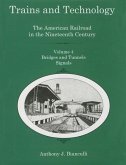Out of Steam; Dieselization and American Railroads, 1920 1960 examines how and why American railroads embraced the diesel locomotive and abandoned steam. Highly regulated railroads were facing difficult business conditions from 1920 to 1960 that resulted in extensive cost cutting. Steam and diesel locomotives were capable machines but were designed, constructed, and maintained in vastly different ways. Railroads generally dieselized to control costs, especially labor costs, but different railroads adopted different strategies for doing so. Some were prompted to try diesels by government legislation in the 1920s while others were excited by streamlined diesels in the 1930s. Still others were attracted to the potential differences in performance that diesels offered in the 1940s. Dieselization had long-term and far-reaching impacts on railroads, rail labor, and communities served by railroads. Despite complete dieselization by 1960, the American railroad industry would continue to decline for the next twenty years. A technological fix like the diesel could not solve other complex problems facing the industry.








